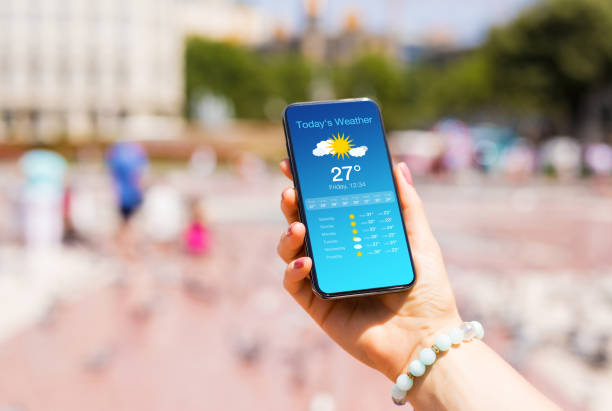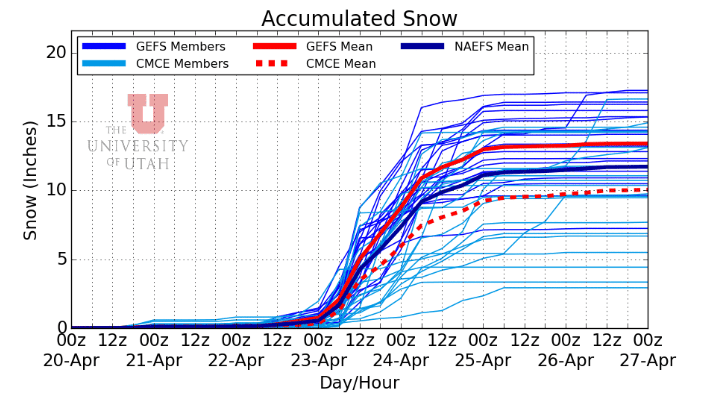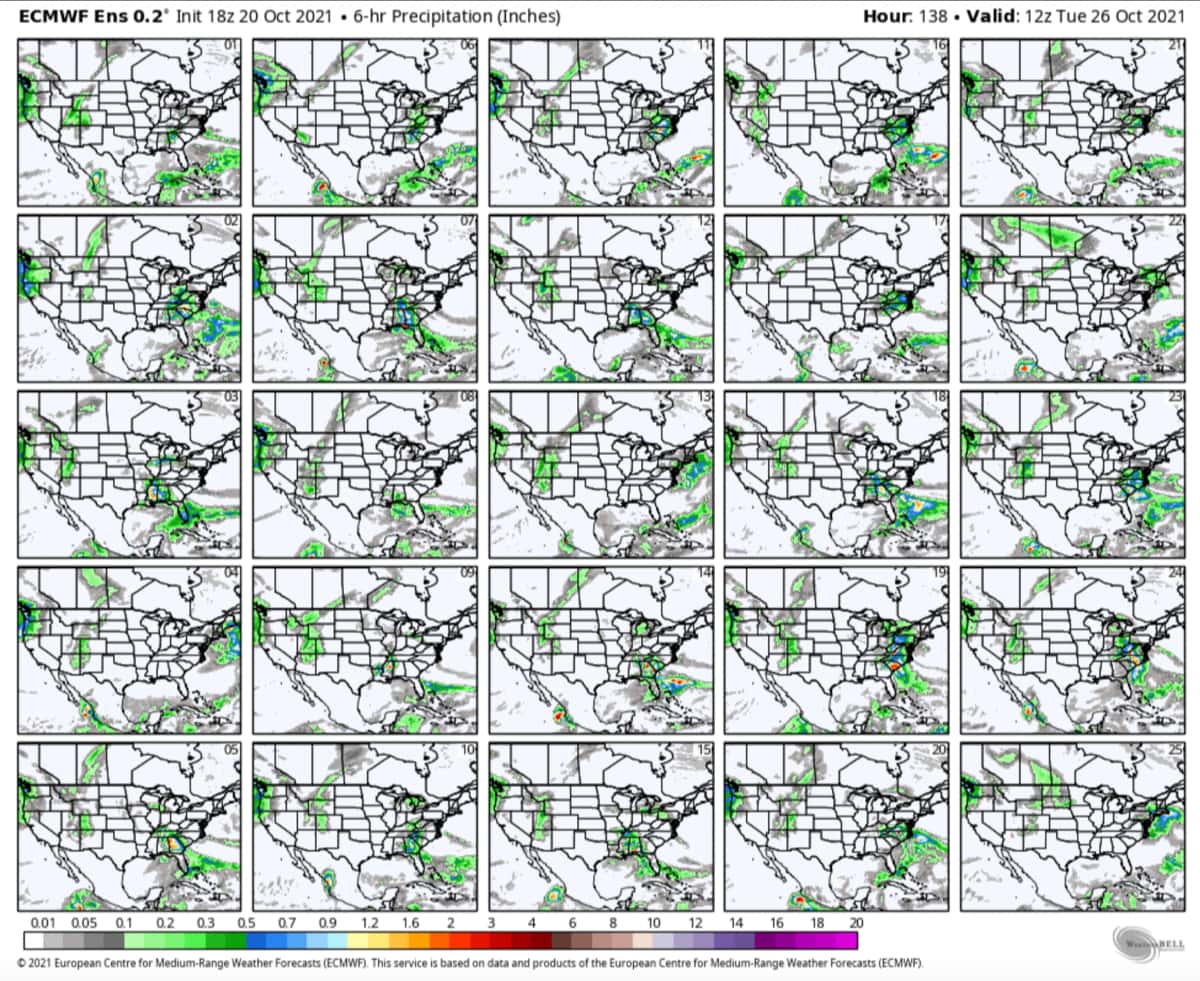
You wake up, pulling back the curtains and checking the forecast for the day. Your weather app reports a 50% chance of snow between 9 and 10 a.m. Excitement bubbles up—visions of fresh tracks through powder fields dance in your mind. But hang on. Does that mean half the mountain will be blanketed in snow? Or maybe it’ll only snow for half an hour? Not quite. Let’s break this down.
- Related: How To Make Your Own Snow Forecast
Snow forecasts, especially those percentage probabilities, are often misunderstood. That misunderstanding can throw off your plans, especially if you’re hunting powder and hoping to make the most of a ski day. A 50% chance of snow doesn’t mean what most people think it means—far from it. To truly understand what that forecast tells you and how it can help you plan your day on the slopes, we need to dig deeper into the nuts and bolts of precipitation probabilities.
And trust me, there’s some pretty fascinating science going on behind the scenes.
What Does 50% Really Mean?

What’s it saying when your weather app flashes a “50% chance of snow”? For starters, it’s not about coverage. It doesn’t mean half the ski area will be snow-covered while the other half stays dry. It’s not about timing, either—you won’t get snow for 30 minutes on the dot. That number means this: there’s a 50% chance of measurable precipitation (usually at least 0.01 inches) occurring in a specific area and time frame.
Picture this: a meteorologist looks at the factors influencing snowfall, such as temperature, moisture, and winds, for example, for a certain area. If there’s enough confidence that all the factors will align, that’s when you’ll see a higher percentage. If the factors are less certain—maybe temperatures are cutting it close, or the storm is unevenly distributing snow—then the percentage drops. The key takeaway? That forecast is an odds game, not a guarantee.
It’s like rolling dice. Say you’re rolling a six-sided die; if someone tells you there’s a 1-in-3 chance of rolling a 3 or 4, that doesn’t mean the die will land precisely halfway between 3 and 4. It just means those are your odds. And weather forecasts operate the same way, driven by probabilities of what *might* happen.
It gets more technical but interesting when you consider how those probabilities are calculated in a meteorologist’s world.
Ensemble Models: How Probabilities Are Made

Behind every weather app or forecast graphic you check, a complex system of models is churning away to predict what the atmosphere will do next. Predicting snow is rarely straightforward. That’s where “ensembles” come in.
Think of ensembles almost like brainstorming sessions. Instead of just running one model and calling it good, forecasters use a group of models (or ensemble) to calculate possible weather outcomes. Most errors in modern forecasting systems result from imperfect initial conditions since we can’t measure and have a perfect idea of the atmospheric conditions everywhere on Earth. In ensemble forecasting, each model uses slightly different initial conditions to account for as many uncertainties as possible because the atmosphere is unpredictable. Small errors in initial conditions can balloon into huge errors days down the line (chaos theory, anyone?).

Say you have an ensemble of 50 models, and 25 of those predict measurable snow for your ski area during a specific time window. That’s when a forecaster assigns that 50% value to your forecast. It’s mathematical. The percentage is based on how many of the models agree, not on the snowstorm’s intensity, coverage, or duration.
Ensemble models shine because they provide a range of possibilities rather than a single, rigid prediction. They’re ideal for ski resorts, where the weather can get weird very quickly—think a sunny day at the base while it’s dumping snow at the summit.
What This Means for Skiers

Understanding precipitation probabilities suddenly becomes useful when planning a day on the hill. A 30% chance of snow doesn’t necessarily mean you should leave your powder skis at home. It just means the odds aren’t leaning as heavily in your favor. But even small probabilities come with surprises. That underdog 30% chance might deliver steady snowfall for the exact terrain you’re eyeing, while the forecasted 80% chance might result in scattered flurries for only a couple of runs.
This also means that lower percentages aren’t explicitly worse or better. A 30% day can become an unforgettable powder run just as easily as an 80% forecast can yield disappointment. It’s all part of the gamble of mountain weather. The key is interpreting probabilities as a spectrum of possibilities—not set outcomes.
That’s why context is key. Are you looking for an all-out, top-to-bottom powder day? Or are you hoping for a few soft turns on groomers? Understanding what that 50% means lets you adjust your expectations and plan smart.
Weather Probabilities Have Their Limits
Even with cutting-edge forecasting tools, there’s an undeniable level of uncertainty in any forecast. A 50% chance of snow doesn’t guarantee you’ll see a single flake; it may also mean a localized squall misses where you’re skiing by just a couple of miles.
Mountains complicate matters even more. Terrain creates microclimates that are incredibly tough to capture in a generalized forecast. Wind direction, elevation changes, and other localized factors can make it snow on one side of a ridge while leaving the other dry. That’s where on-the-ground observations—like checking the summit webcam—pair nicely with probability data to give you a better idea of what’s happening.
Bringing It All Together
So, how can you use forecasts with percentages attached? First, know that it’s not about precision but understanding odds. Keep an eye on trends. Is the chance of snow steadily increasing or decreasing over time? That tells you how confidence is evolving.
Second, pair the forecast with other tools like radar maps, temperature data, and on-mountain conditions reported by your local resort. These give you a complete picture of what’s likely happening across various elevations.
Finally, be flexible. A 20% chance of snow means there’s still a shot at fresh turns, just as an 80% chance should still be taken with a touch of skepticism. Chasing snow is all about staying informed yet embracing the uncertainty. After all, isn’t that part of the thrill?
Mountain weather is nothing if not humbling. That “50% chance of snow” on your phone screen represents a world of possibility. It captures the inherent unpredictability of winter storms, especially in alpine terrain. Instead of overanalyzing the numbers or tying your hopes to a specific outcome, let them inspire you to chase the unknown!
Whether the forecast says 20% or 80%, one thing is for sure: there’s no better place to be than surrounded by towering peaks, skis strapped to your feet, waiting to see what surprises the weather brings.